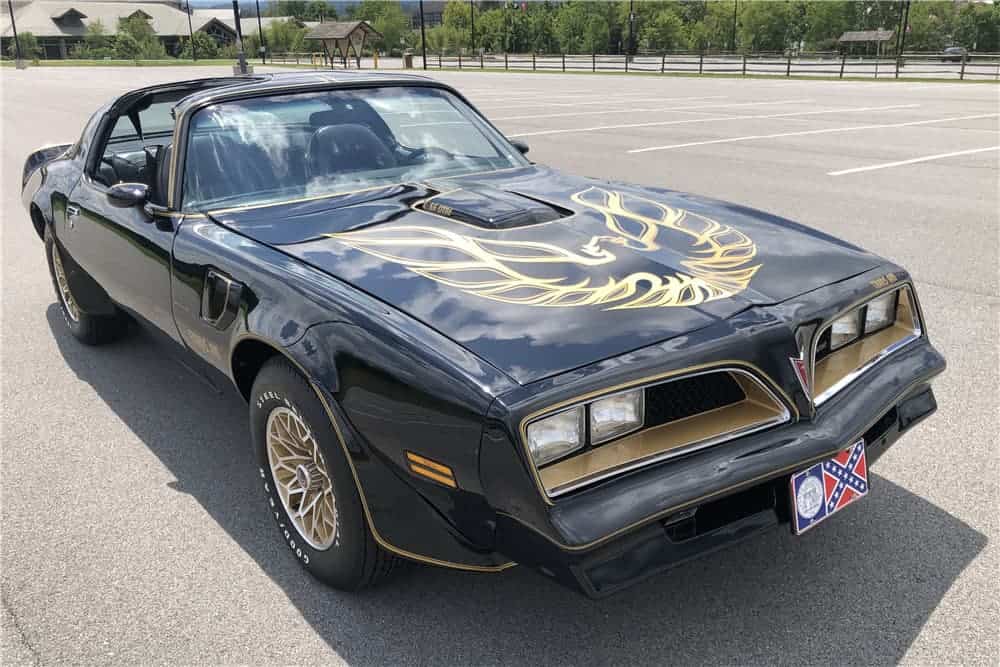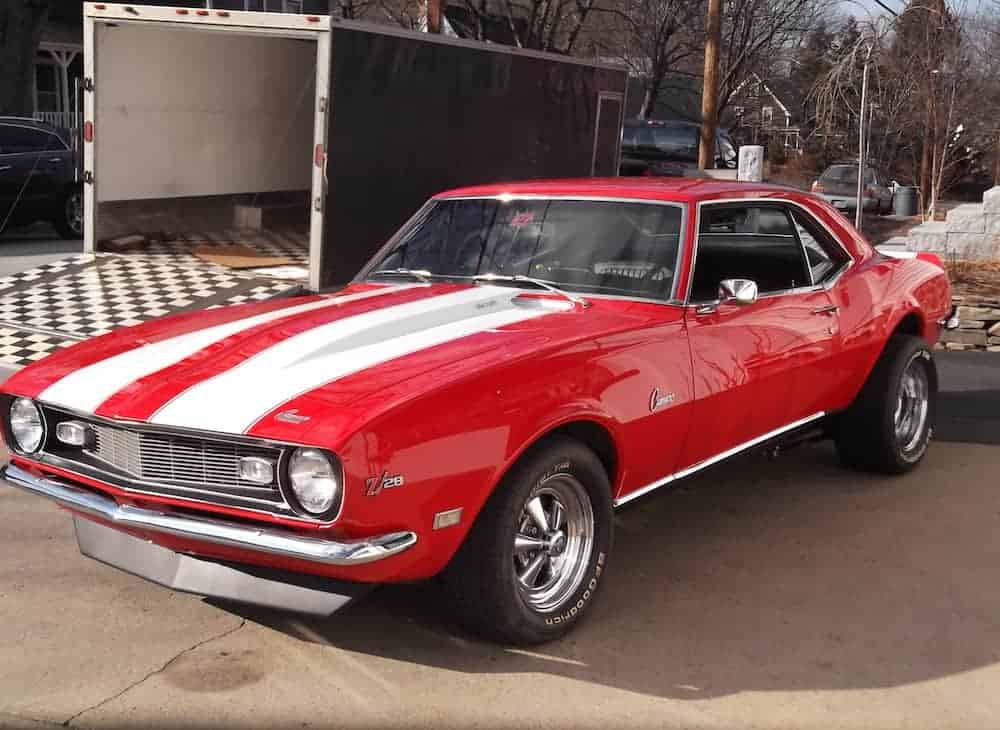What’s the Difference Between a Muscle Car and a Pony Car?
If you have even a passing interest in classic American cars you’ll undoubtedly have heard the terms muscle car and pony car, but do you really know what these terms refer to or what the difference is between a muscle car and a pony car? Let’s take a look at the issue and shed a little light on what can be a contentious subject in certain company.
Pony cars and muscle cars are both types of sporty, performance-focused American cars, but generally speaking, pony cars tend to be smaller in terms of stature and performance than their muscle car counterparts. However, there are no universally accepted definitions of either and there are plenty of examples of cars that get referred to as both muscle cars and pony cars by different people in different circumstances.

What is a pony car?
A pony car is usually a sporty, performance-focused version of a mass-produced American car that has two doors, and four seats and is relatively affordable. The size and output of pony car engines can vary considerably, but older pony cars often had small block engines that had eight, six, or in some cases, even as few as four cylinders.
As four-cylinder turbocharged engines are becoming increasingly popular as the base engines in a lot of cars these days, many models that might be considered to be modern-day pony cars now have turbo-fours under the hood.
What was the first pony car?

If you do a Google search for the question “what was the first pony car?” you’ll see the Wikipedia result claiming it was the Plymouth Barracuda because it went on sale a couple of weeks before the Ford Mustang in 1964. While there’s no denying that the Plymouth Barracuda arrived first if only just, you have to ask yourself why a car called the “Barracuda” would cause someone to come up with the term “pony car” for it.
As I said earlier, there are no hard and fast rules to definitively categorize what is and what isn’t a pony car. But why wouldn’t it be obvious that if the term was first coined to describe a type of car in 1964, it wouldn’t relate in the first instance to a car called after a horse rather than one named after a fish?
For that reason, I’m going to stick to my guns and plant my flag in the ground where it says the Ford Mustang was the car to attract the term “pony car.”
What is a muscle car?
The typical muscle car is a medium to large American rear-drive sedan, coupe, or convertible production car with two doors, wide tires, flared fenders, and a powerful V-8 engine. Sometimes they are performance-orientated versions of what can be relatively mundane cars in their standard forms, but sometimes they are a standalone model in their own right in an automaker’s range.
Typical classic muscle cars include the Plymouth Barracuda, Dodge Charger, Dodge Challenger, Pontiac Firebird, and the Chevrolet Camaro, but there are many caveats to this and more extensive lists as some of these cars changed quite dramatically over the years.
Why do muscle cars and pony cars get confused?
I’d lay the blame for the lack of clarity about what is a pony car and what is a muscle car squarely at the feet of the Malaise era that ran between 1973 and 1983. This was a period when the global price of oil quadrupled and America was particularly badly hit.
After years of American consumers buying and driving big, gas-guzzling cars, the industry found itself having to pivot dramatically towards smaller, lighter, and more fuel-efficient cars instead.
Initially, the American auto industry tried to address the issue of emissions by de-tuning the engines in their cars but this actually made their big, heavy cars even less fuel-efficient than they were already.
Things started to get really serious for automakers when the Environmental Protection Agency (EPA) actually started to regulate fuel efficiency in the industry through vehicle emissions control, and in 1978, the Energy Tax Act legislated to actively discourage the sale of brand-new vehicles that weren’t considered to be efficient enough via the Corporate Average Fuel Economy (CAFE).
These and other measures were responsible for things like the Ford Mustang II, which was a two-door coupe and three-door hatchback that was considerably smaller, lighter, less powerful and slower than its recent predecessors, and then the third-generation Foxy Body Mustangs.

If any car should be used to define the pony car it would surely have to be the second and third-generation Ford Mustangs, but it’s equally easy to see where the confusion arises when you look at their 1971-1973 predecessors that had grown big, fat, luxurious and extremely thirsty.
I love the 1971-1973 Mustang era, but how on earth could those road-going leviathans NOT be considered to be muscle cars with their additional 800 pounds and those mighty 5.8-liter V-8 engines?
Although the Mustang II and the Fox Body Mustang have their fans and they should definitely, 100% be classified as pony cars, I think they are abominations that sully the good name of the legendary Ford.
Is the Chevy Camaro considered a muscle car?
In general, the Chevrolet Camaro is considered to be a pony car, but there are plenty of times when it has also been held up as the very epitome of a muscle car too.
If you look around various websites to try and determine whether a car is a muscle car or a pony car, you’re going to find more contradiction than agreement. For example, if you try to determine whether the Chevrolet Camaro is a pony car or a muscle car, you’ll find them on lists of both categories.
For example, some people insist the Camaro is a pony car because there’s no doubt about the fact it was introduced by Chevy as a direct competitor to the Mustang. As the first Mustang was the first pony car (as I insist earlier) it stands to reason that its first major competitor must also be a pony car, right?
However, below is a list of the 10 greatest muscle cars of all time from the highly regarded Auto Express website that has the 1967 Chevrolet Camaro Z/28 at number 4. On the other hand, the website hotcars.com has an article listing “15 Reasons Why the Camaro is the Best Muscle Car You Can Buy Right Now.”

That paradox brings us to an important conclusion, which is plenty of cars can swap and change between being a muscle car and a pony car over time as designs, sizes, and outputs change for whatever reasons.

Is the Dodge Charger a muscle car?
The Dodge Challenger is one of those cars where there’s little or no dispute about its muscle car credentials, but what about the four-door Dodge Charger? Can a four-door car be a muscle car, and if so, does that make the Charger America’s only four-door muscle car?
I’ll nail my colors to the mast here and tell you that I absolutely love the Dodge Charger and it absolutely is a muscle car, even if it does have four doors. There have been many fabulous-looking Charger models over the years and I think the current model is as fabulous as any of them, especially in its SRT Hellcat guise.
What’s not to love about a big, spacious, and well-equipped four-door sedan that can put out 707 horsepower and 650 lb.-ft. of torque and can touch on a top speed of just short of 200 mph? If that’s not a muscle car then I don’t know what is.
What is the difference between a pony car and a muscle car then?
So, what can we conclude from all this then? If a Camaro is a pony car that sometimes moonlights as a muscle car, and the first pony car of them all, the Ford Mustang, also qualifies as a genuine muscle car from time to time, there really isn’t a clearly defined difference we can put our hat on.
I’ll throw another car into the mix just to further confuse matters, shall I? What about the Cadillac CTS-V? It’s based on the midsize CTS which is a rear-wheel-drive, four-door sedan, but under the hood is a 6.2-liter LT4 V-8 that develops a pretty staggering 640 horsepower and 630 lb.-ft. of torque. That’s close to Charger Hellcat territory, but does that make it a muscle car or does its relatively small footprint make it a pony car?
And before I go, what about the legendary Pontiac Firebird Trans Am? Hotcars.com says the “the Trans Am is one of the most popular muscle cars ever put on the market,” while Wikipedia states that “Trans-Am production cars were factory-built pony cars based on vehicles raced in the Sports Car Club of America Trans-Am Series.”
Personally, I couldn’t care less if a car is a pony car or a muscle car, or both. If you like the way it looks and it’s got more power than the kind of modest cars it shares a platform and other components with, it can be either as far as I’m concerned and it won’t make a difference to how I perceive it. Then again, what about the………..?
